Revamp your information with these 7 unique metadata editors
| February 2, 2021
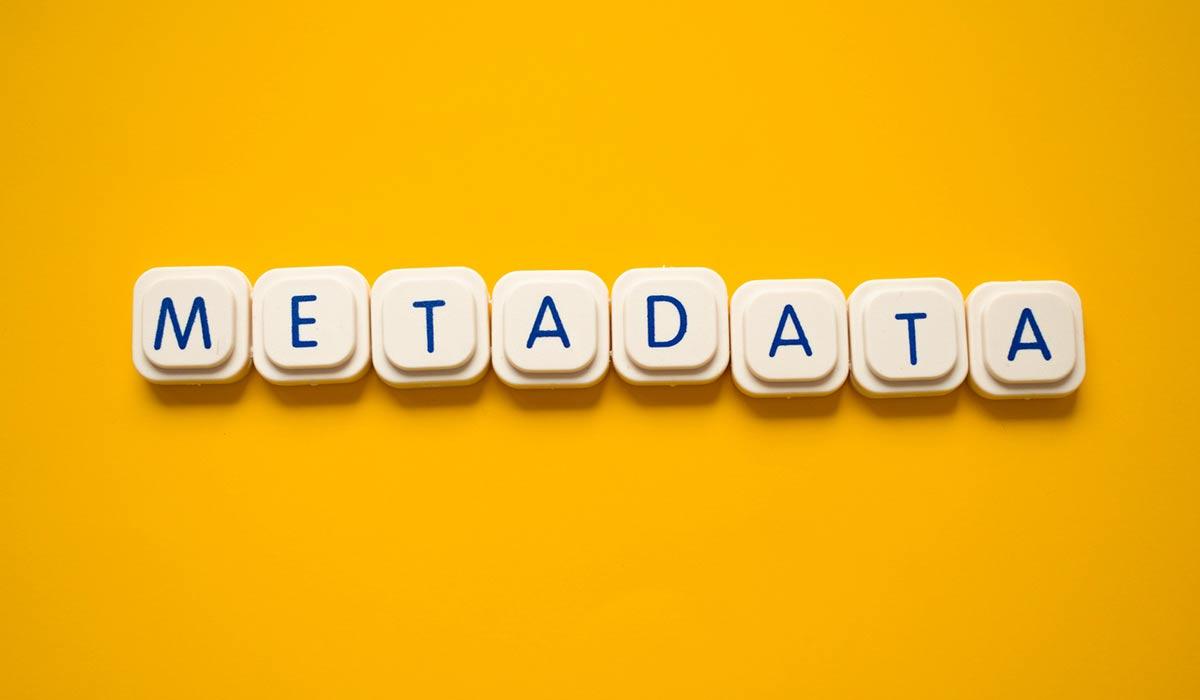
Metadata has the power to simplify many of our difficult digital tasks, but it’s not always so easy to edit it, especially en masse.
Fortunately, there are some powerful software systems designed to alleviate the pressure of metadata editing and make it easy.

This article delivers seven fantastic examples, explaining each option in detail. Let’s begin.
Benefits of an effective metadata editor
Anyone who has tried to edit the metadata of a digital file will know that the task can be quite daunting and time-consuming, especially if there are a large quantity of files to edit. Metadata editing software simplifies this process and gives users more power and control.
Each editor is different, but there are benefits that are generally universal, such as the ability to open and view a metadata-rich file.

One of the main reasons users who need a metadata editor cite is its ability to prevent unwanted errors and inaccuracies within important files. Having a system so capable of preventing and fixing errors keeps work moving along smoothly. On top of this, the editor often handles processes that manual entering, which we will go over later, cannot.
When to use a metadata editor
There are a few specific instances that require a metadata editor. The first is if the time it would take to look through files and change the information inside them would be an overwhelming task, both in terms of time spent and difficulty. If a user wants to change the date of a digital picture of their cat, chances are they don’t need an advanced editing system.

However, if a large company needs to remove an author from thousands of their digital files, an editor would be helpful.
The second situation that would necessitate an editor would be if the types of files you need to edit require immense technical knowledge.
Whatever the case, there is an editing system out there that is perfect for you. I’ve compiled a list of seven that will handle whatever metadata editing needs you have.
The 7 best metadata editors for 2021
Before I dive into the following editors, let me point out that certain programs are designed for a specific task. Navigate this list until you are satisfied that you’ve found the perfect system for your individual needs.
1. MyMeta
MyMeta is a Windows-based system that allows users to edit media file metadata. If you’ve ever tried to edit metadata manually, you’ll understand the restrictive nature of the process. The MyMeta system turns that all on its head and fleshes out a wide open space for users to input information about songs, film and more.
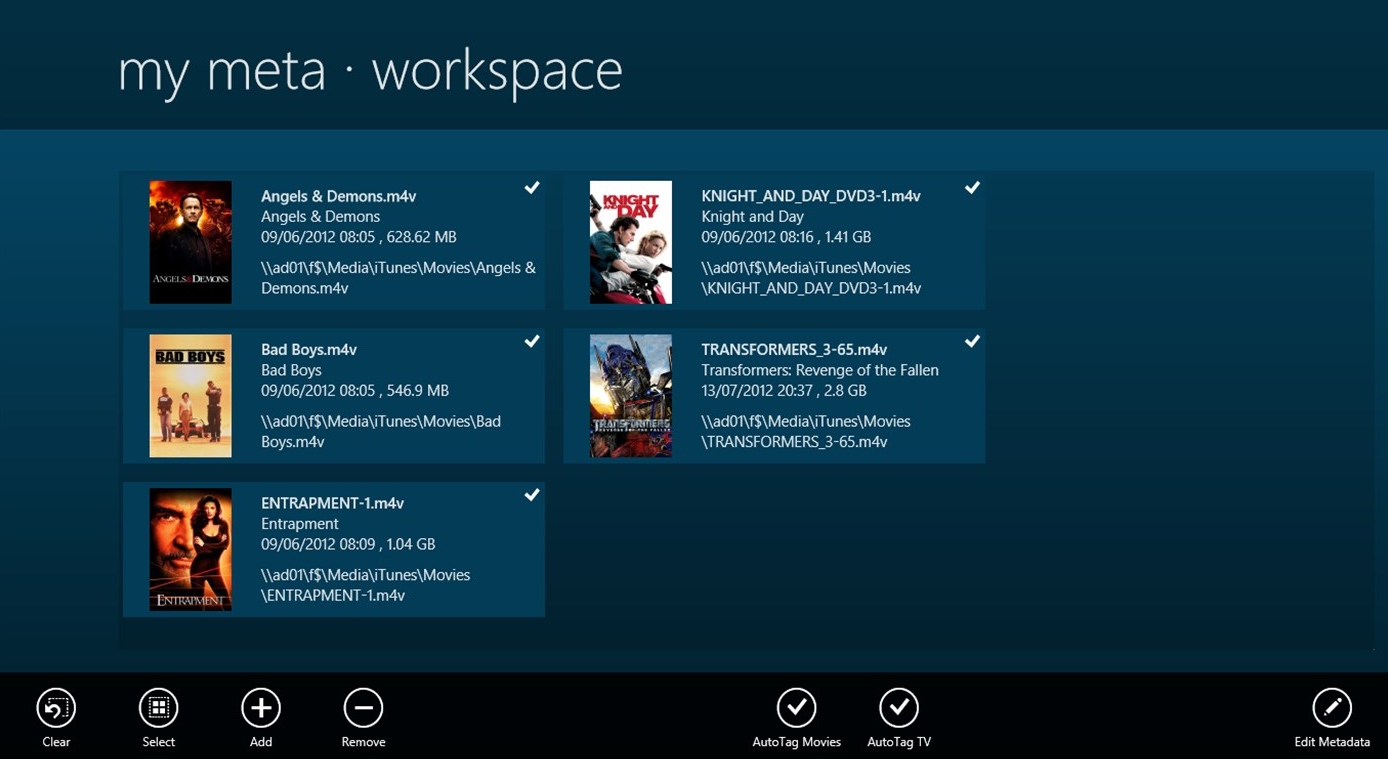
MyMeta works on MP4, MOV and M4V files. Its main purpose is to allow superior organization of media on a digital platform, keeping files synced in order on a user’s computer or streaming devices.
2. ExifTool
ExifTool allows users who need extensive metadata editing within highly specific digital files to accomplish their goals. ExifTool handles common as well as uncommon file types, making this program extremely useful to the few who do use them often. The program is available for Windows, Mac and even lesser-used operating systems.
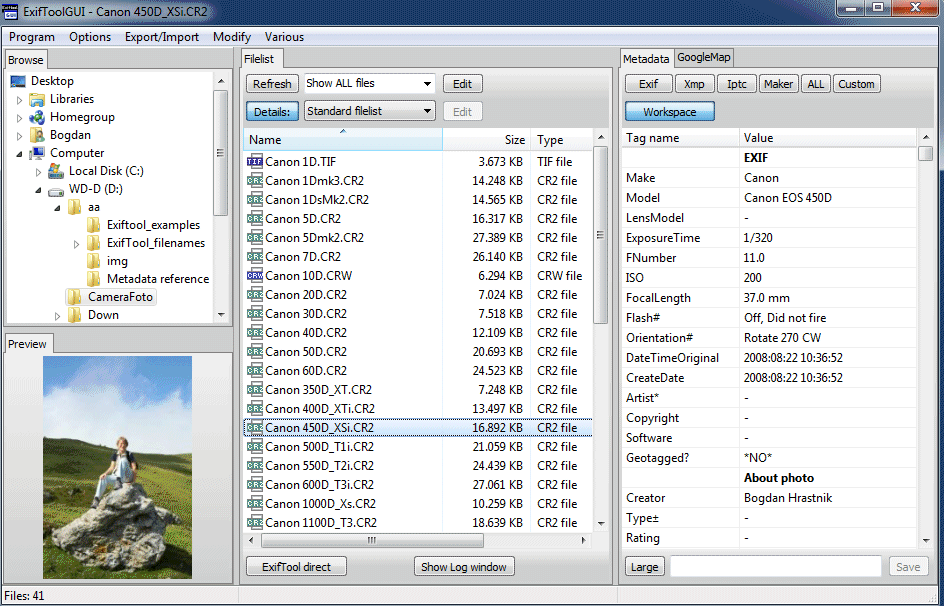
Note that, like many editing systems, ExifTool also acts as a way for users to open obscure digital file types for viewing and reading. This includes numerous camera file types from most makes and models. It also does helpful processes outside metadata editing, such as backing up images automatically and allowing users to input their own keywords.
3. TigoTago
TigoTago is one of the most helpful programs when it comes to editing keywords and tagging files in bulk. The system supports files like WAV, AVI, MP3, FLAC and more. It’s designed for Windows systems, though users have reported they’ve been able to work it into their Mac systems as well.
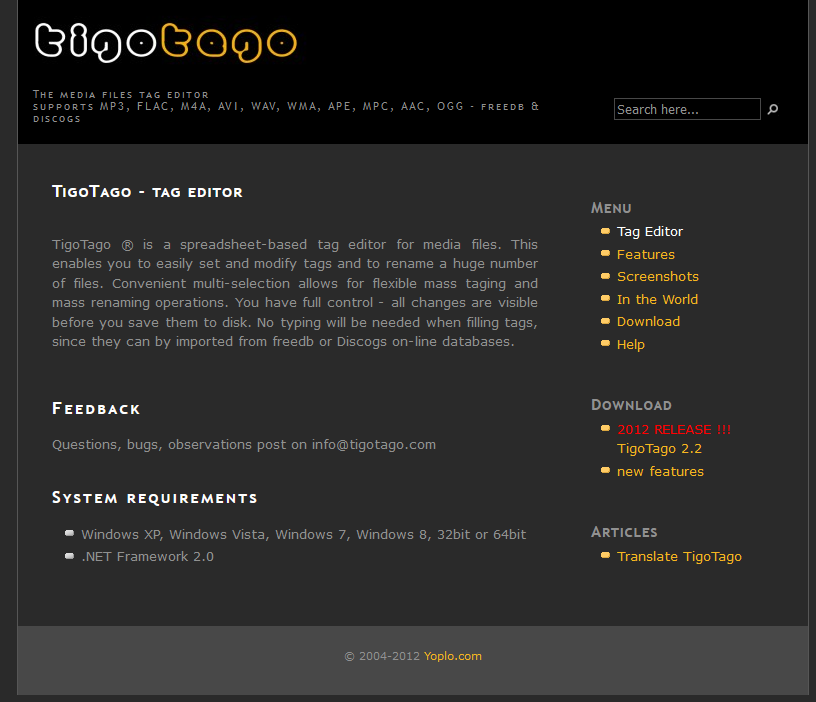
TigoTago operates by acting like a simplified editing tool which brings up a window over items you wish to edit. This gives users an easy way to change metadata within something like an MP3, such as the title or artist. Use TigoTago if you prioritize ease of use over technologically-advanced systems.
4. Exif Date Changer
Exif Date Changer lets users adjust large quantities of image files to coincide with certain dates and time. If a photographer is shooting in a different time zone, the digital date tagged in the images may differ from the actual time the picture was taken. This software corrects all this simply and quickly.
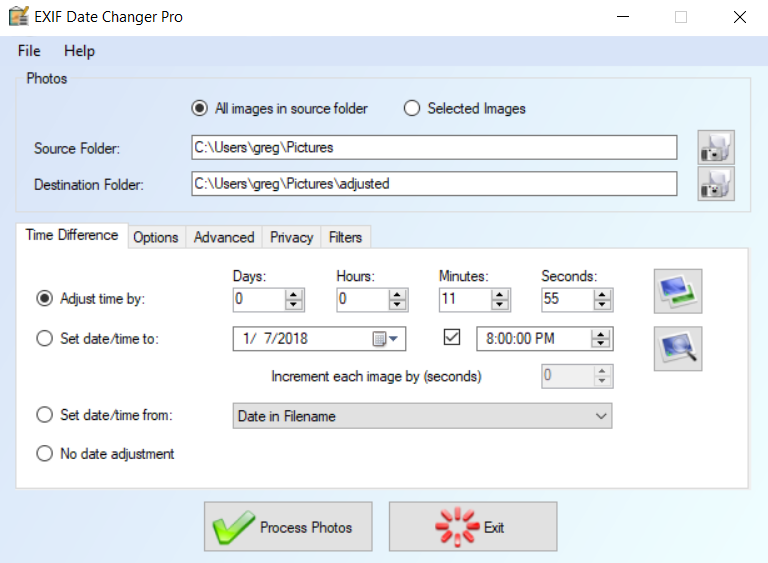
At first, this seems like a fairly limited system, which is true, but that doesn’t make it unnecessary. In fact, one of the most annoying issues photographers deal with is the expansive time zones, especially for those who travel to shoot.
5. Canto DAM
Canto’s digital asset management system is one of the few programs capable of handling large scale metadata automation. Having a tool that automatically tags files and sorts information for easy retrieval is a must for companies with large data.

Though Canto isn’t aimed toward an individual user with only a few photos and videos to edit, it’s clear that it’s the optimal choice for companies looking for a way to save time concerning all things metadata.
6. MP4 Video & Audio Tag Editor
MP4 Video & Audio Tag Editor lives up to its name: It edits MP4 video and audio tags. This Windows system is a more extensive editor than others in this category as it extends the files it covers to lesser-used types.
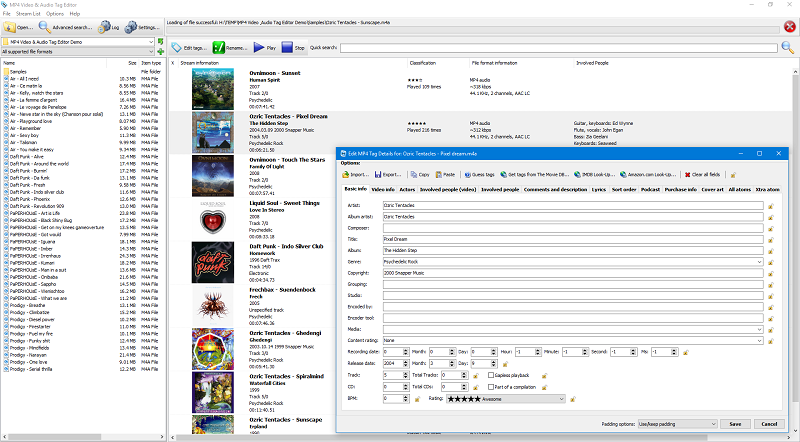
One way the MP4 Video & Tag Editor is helpful is in its organizational prowess, giving users the chance to add important keywords and even images/covers to videos and songs with minimal effort. This makes this program unique. Consider using it if you need metadata editing with a more personalized touch for your digital media collection.
7. Metadata++
Metadata++ is a system that exists only to edit metadata efficiently. Note that not every metadata editor, including the ones listed here, are exclusively metadata editors. Good or bad, this reality makes Metadata++ a solid freeware program since it focuses solely on making your metadata editing tasks easier.
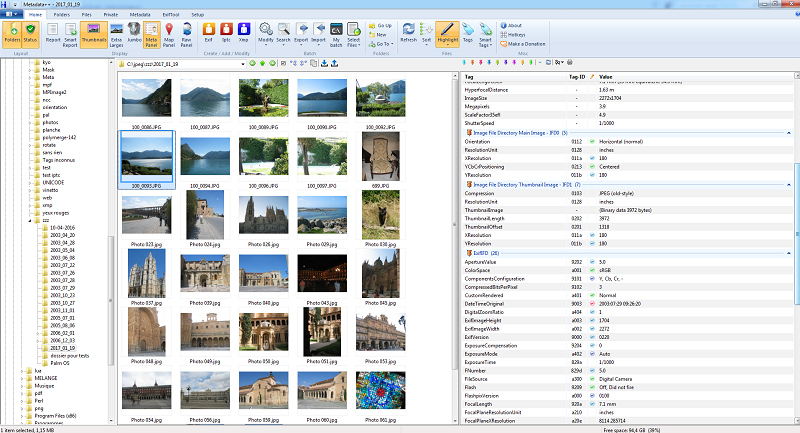
Metadata++ is a Windows system that offers a smooth interface and fast editing. There are even different hotkeys that let users quickly move through their metadata editing tasks without constant clicking of the mouse.
Now that you have seven amazing editors to choose from, let’s consider a different kind of option: manual editing.
Can you manually edit metadata?
As I briefly mentioned earlier, there are times when it makes sense to forgo a metadata editing system. This is often best suited for users who occasionally change information inside a video or image file. Here’s a quick and easy way to manually edit a file on both Windows and Mac:
1. Locate the intended digital file.
2. Right-click it and select ‘Properties’ from the resulting popup.
3. In the new window that appears, select ‘details’.
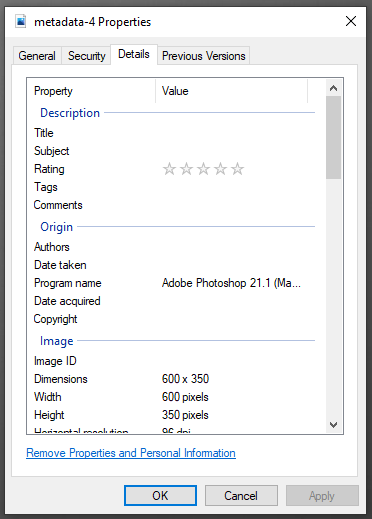
4. Depending on the type of file you’re editing, there will be a list of items that are accessible to change. For example, image files have an ‘Origin’ section where you can change the ‘acquired’ date. For some file types, you won’t be able to manually change things, but you can remove it with the ‘Remove properties and personal information’ link at the bottom of the popup.
5. Once finished, click ‘Apply’ and ‘OK’.
Remember that not all file types will be editable in this manner, so beware of when you’ll need outside software to complete your task.
Mac and Windows differ quite a bit, especially in this regard. Mac users typically look to editing programs to change metadata, but with image files it is possible manually. Here’s how to edit the metadata of an image file, similar to the same process above, only on a Mac operating system:
1. Open the ‘Photos’ app
2. Locate the image file you wish to edit and right-click it
3. Select the ‘Get info’ option from the popup window
4. From the new window, locate the details you wish to change and do so
Find the right fit for you
2021 is an exciting time for metadata, as we continue to see epic growth and expansion of data and its many uses. Make sure that you have an editing system that fits your specific needs. Chances are it will come in handy more than you think.
Frequently asked questions
How do metadata editors handle sensitive information like geolocation?
Most metadata editors allow users to view and edit sensitive data — like geolocation tags — in images. And some editors provide options to remove or anonymize this information. Ultimately, it’s up to the user to be aware of privacy concerns and use these features responsibly.
What are the costs or licensing models for metadata editing tools?
Most metadata editors offer both free and premium versions. Free versions typically offer basic features. Advanced functionality like bulk editing or specific file format support usually require a paid license. Pricing models for premium versions vary from tool to tool. Some operate on a one-time payment model, while others offer subscription-based services. For the most up-to-date costs and details on available plans, it’s best to consult the providers’ websites.
